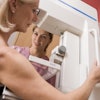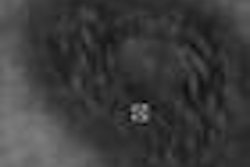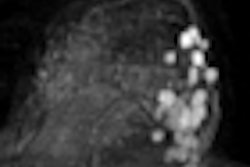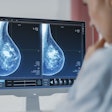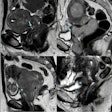An automated breast ultrasound system (ABUS) provides significantly higher sensitivity for detecting malignant breast masses than for benign masses, according to a study published online February 16 in the European Journal of Radiology.
A major limitation of screening mammography for women with dense breasts, and for women younger than 50, is reduced sensitivity. The addition of ultrasound helps increase sensitivity, as illustrated by the previously reported American College of Radiology Imaging Network (ACRIN) 6666 trial. ABUS has the advantages of reproducibility, ability to survey large areas of the breast, and reduced operator dependence, which is a common problem associated with handheld ultrasound (HHUS) devices.
The current retrospective study in EJR found the automated 3D breast scanner performed better than HHUS in detecting malignant, large, irregular-shaped masses with surrounding changes.
Researchers obtained bilateral whole breast US images between November and December 2007 using ABUS in 67 consecutive women. The patients were scheduled to undergo US-guided needle biopsy due to suspicious breast masses. The researchers included 24 invasive ductal cancers in 23 breasts, 46 benign breast lesions in 44 breasts and 38 normal breasts. Three breast radiologists, with experience ranging from one year to five years, independently reviewed the data of the 105 breasts to detect suspicious solid masses with pathology as the standard of reference.
The overall sensitivity and specificity for the detection of solid breast masses was 71.9% and 79.5%, according to Jung Ming Chang, MD, of the department of radiology at Seoul National University Hospital in South Korea, and co-authors. The radiologists' sensitivities for malignant masses ranged from 87.5% to 95.8%. The malignant mass sensitivities were much higher than for benign masses, which ranged from 56.3% to 66.7%, according to the authors.
The researchers found detectability of the lesions was associated with mass size, surrounding tissue changes, and shape of the mass on multivariable logistic regression analysis.
"Our study is, to the best of our knowledge, the first to assess the lesion variables that affect the detectability at ABUS," the authors wrote.
More studies on the performance of ABUS for the screening population need to be performed in order to make ABUS an adjunct to mammography, they concluded.
